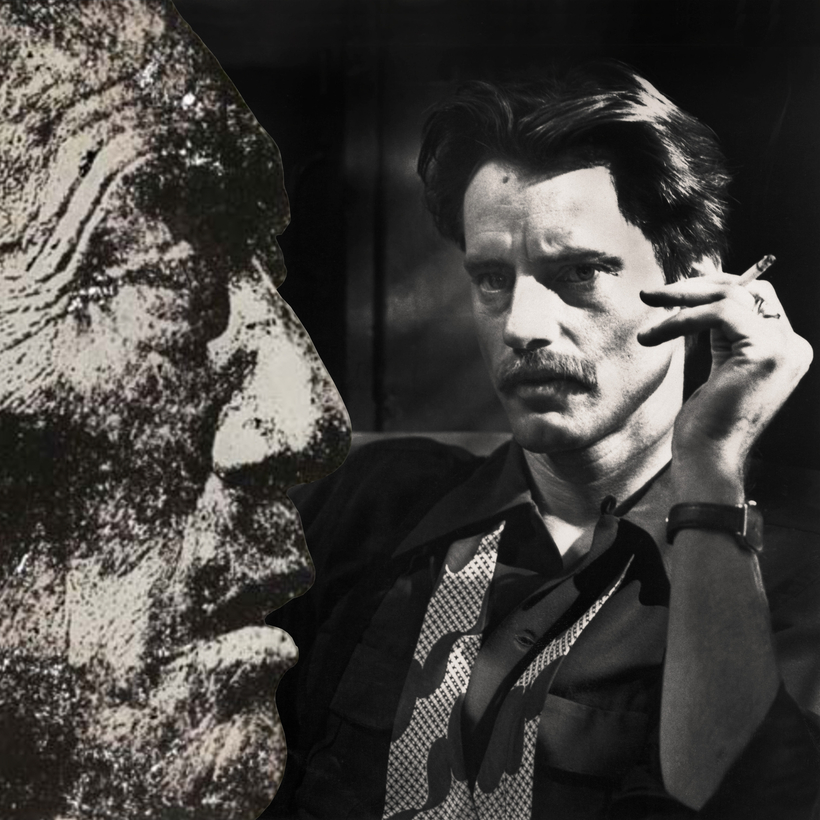The first to answer their phone was an 86-year-old Hopi-Winnebago man named Louis Mofsie, or Green Rainbow, a founding member of Thunderbird American Indian Dancers.
I was conducting research for my biography Coyote: The Dramatic Lives of Sam Shepard and attempting to reach the people in a cast list titled “Indians” in the original program for the playwright’s Operation Sidewinder. Staged at Lincoln Center’s Vivian Beaumont Theater in the spring of 1970, the full-length play is notable as Shepard’s first and only drama to premiere on Broadway.
When someone finally picked up my call, I had an uncomfortable question to ask Mofsie about this notoriously wild production.
In the play, the U.S. Air Force has funded a massive, computerized sidewinder rattlesnake designed to track alien spaceships. Its inventor, Dr. Vector, believes that if the sidewinder (a sort of sentient A.I.) were physically freed, so, too, would be its consciousness, which might then be capable of communicating with alien life-forms. Sure enough, the snake escapes the military laboratory into the Mojave Desert, and among the mechanical reptile’s many hunters is a band of Hopi Indians who believe the end times, when the world will be destroyed by nuclear warfare or its doomsday equivalent, have arrived. Once this prophecy is met, the sidewinder will communicate for the Hopi with a savior from the stars, a spirit known as the Blue Star Kachina.

Shepard’s spectacular snake-dance finale included a troupe from Thunderbird American Indian Dancers performing onstage with a 20-foot-long rattlesnake puppet, when, Shepard writes, “a tremendous bolt of blue light issues from the sidewinder, matched by one in the sky.” This represents the Hopis’ salvation in the form of the Blue Star Kachina, and the stage and auditorium were filled with billowing smoke, gusts of wind, flashes of blue light, and “a high-frequency whine.” Then the Hopi dancers and a couple of white stragglers vanished into the heavens … Or was it a flying saucer?
This was the scene that led to my question for Mofsie: “Shepard sort of conflates the prophecy of the Blue Star Kachina with a U.F.O. landing. Is that how you read it?”
A conceivable explanation was that Shepard had been irreverently jamming on Native mythology, but Mofsie offered something different. “It makes sense,” he assured me about Shepard’s commingling of U.F.O.’s and the Blue Star Kachina. Alien beings “came from the stars” and taught their tribe how to survive the high desert, he said. Upon leaving the planet, the extraterrestrials told them that snakes would serve as guides and go-betweens until the old world is destroyed and a new world emerges. “The Hopi have believed this for many hundreds of years.”

Mofsie is a religious man, and he told me that he’d admired Shepard’s sincerity over his insistence that Hopi ritual and belief be staged as genuinely as possible. “What he put in the play was authentic,” Mofsie said. “It wasn’t something he made up.”
“This was a time when a lot of Native people were objecting to what was going on,” the dancer said about the abuses, by both conservatives and progressives, of white culture in the 60s appropriating Native culture for entertainment. “Rightfully so,” he said. “I agree with that.” But authenticity was the reason the Thunderbird dancers had been hired in the first place, and why they’d agreed to take part in the show. “People still didn’t understand Native American culture,” Mofsie told me after describing the largely disrespectful uptown audience’s response to the dancing at Lincoln Center. “I think [with] their stereotypical preconceptions … what Native American dance was—is—was very difficult for them to understand.”
In the end, this experience had a powerful and lasting impact on Shepard. “Putting a real ritual onstage is sacrilegious,” he eventually concluded, despite the supportive presence of the Thunderbird dancers at Lincoln Center. “The play should change people—it should be the ritual.”
Louis Mofsie was listed only as the 10th “Indian” out of 15 in the Lincoln Center program, when in fact he was the choreographer of their Broadway show. Mofsie also provided Shepard with the sheet music and lyrics for the songs and chants that appear in the published book, where he’s also left uncredited.
Note to aspiring biographers: Don’t forget to check the cast list. You never know who might pick up the phone.
Robert M. Dowling is a professor at Central Connecticut State University and the author of Slumming in New York: From the Waterfront to Mythic Harlem and Eugene O’Neill: A Life in Four Acts

